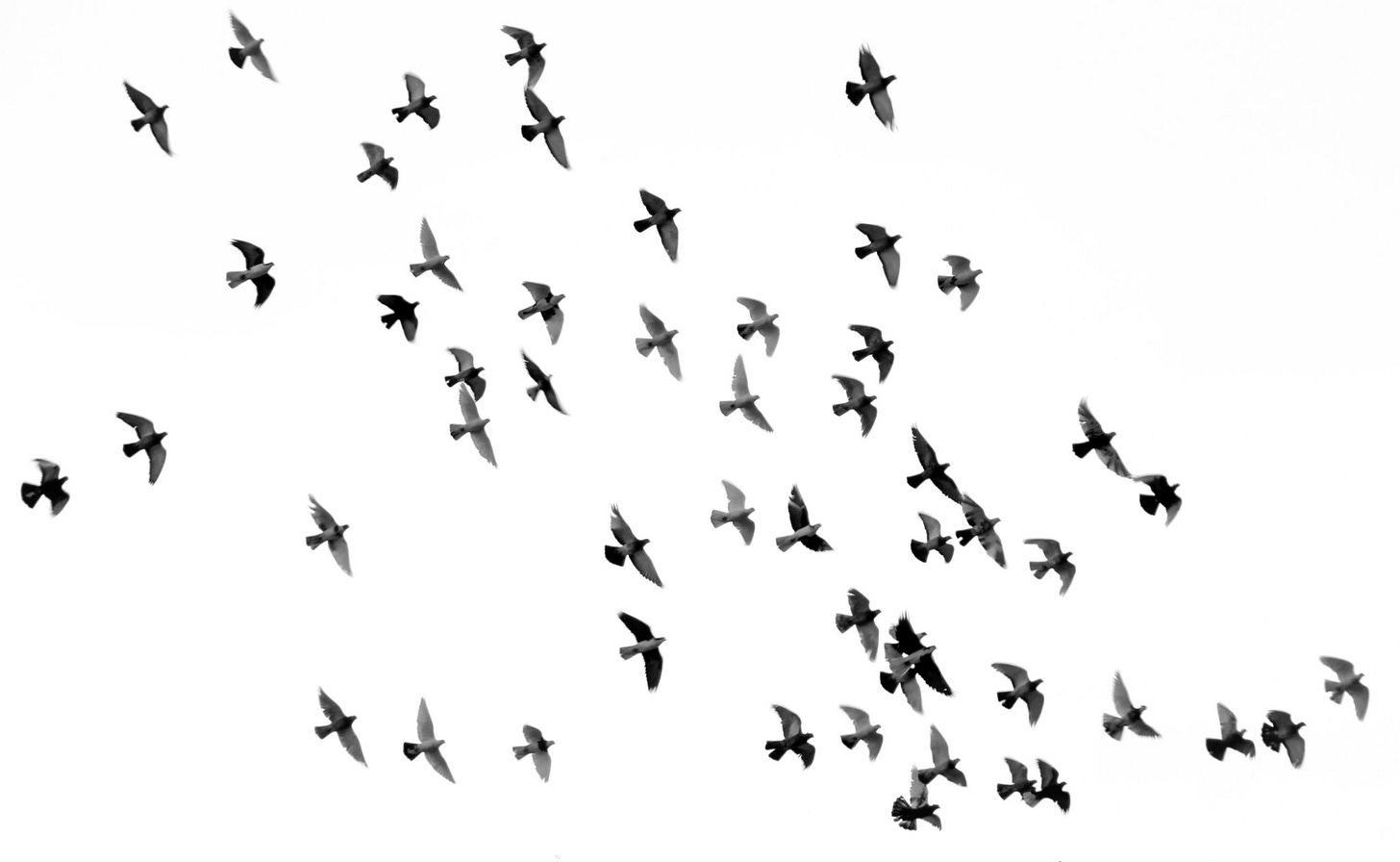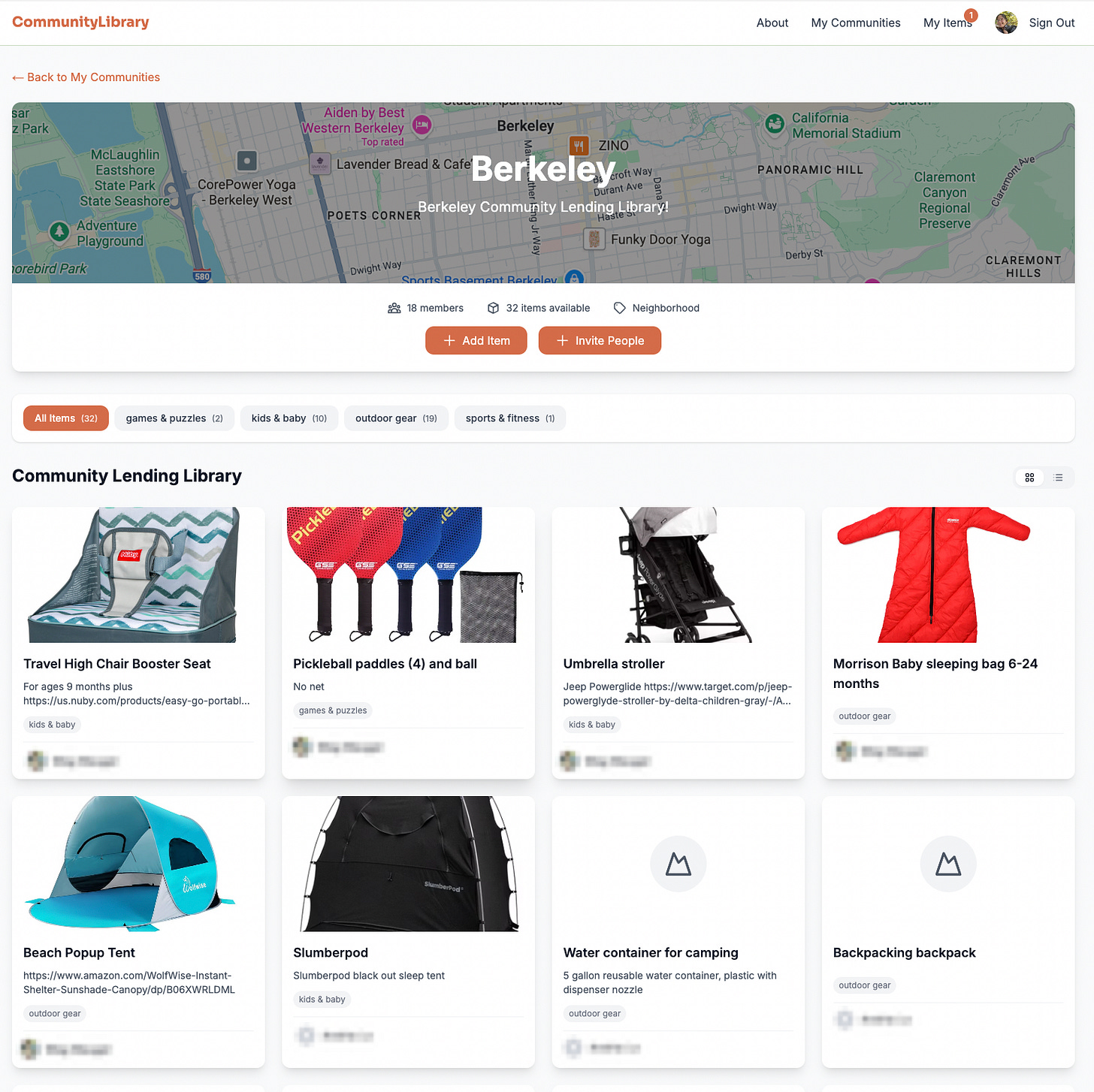What if hard work felt easier?
Rethinking productivity, motivation, and the path of least resistance
Today is the last day to get the early bird pricing ($40) on Creating Space, my self-paced journaling course with Buster Benson. It’s a lightly structured way to slow down and reconnect with what matters most — through thoughtful journaling prompts and reflections that help you find clarity and direction at your own pace. Join us for the fall cohort!
I’ve been thinking a lot about the difference between work that feels hard and work that just flows.
Sometimes work doesn’t feel effortful, but still leads to big results — it can just feel natural, even joyful. That’s the kind of work I’ve been leaning into lately, and I’m starting to believe it’s not just more sustainable — it can also be more effective.
I was reminded of this when I went into SF a few weeks ago to hear my friend Kate Mason speak about her new book, Powerfully Likeable, at the Ferry Building.
During her conversation with Heather Knight, two things really landed.
First, when asked what it was like to write the book, Kate said, “I know I’m supposed to say it was a slog, but honestly, it was joyful.” Getting her ideas down, things she’d been working through with clients for years, just made sense.
Second, she talked about how powerful it is when your real self and your performative self at work are as close to the same as possible. When you stop trying to lead like someone else — and instead lean into your natural way of working — everything gets easier. And the results are often better, too.
Both of those insights point to the same idea: that ease and alignment aren’t indulgent — they’re a path to real, lasting impact.
These thoughts are so counter to the current state of the tech industry, which feels like it’s glorifying grind culture and mandating long hours with butts in seats more than ever. There’s an implicit assumption that if your work doesn’t feel difficult or draining, you must not be trying hard enough.
But what if that’s completely backwards?
What if the most effective thing you could do is to follow the path that feels most obvious to you — the one that doesn’t feel like a grind at all?
What if the work that flows easily, the things you’d do even if no one asked, is where your real leverage lives?

When “working hard” doesn’t feel hard
I’ve experienced this kind of easeful, high-output work many times — both at companies and on my own.
At my first startup, I wore every hat imaginable, and it all felt obvious and fun. Building out a coaching and leadership development company for engineers felt joyful.
In fact, for a long time I felt shameful that maybe I wasn’t working hard enough. I wondered what I could do if I really pushed myself.
But when I look back, any reasonable person would say I was working incredibly hard. I have just had good luck and judgment to choose several environments where hard work felt like what I wanted to do.
In college, I’d work after dinner and stay up until 3am coding in my dorm basement, then sleep for four hours, go to class, eat lunch, and sleep another four before dinner. That bizarre bimodal sleep/work rhythm felt totally natural at the time. I think back on it fondly — not because it was “hard work,” but because I loved coding and debugging so much, it didn’t feel like work.
I’ve also built my career at early-stage startups, which are known for being a lot of work. But when I’m on the right team, working on something I care about, it feels like I’m just getting what needs to get done, done (and often this does look like putting in extra hours). On the flip side, I’ve also worked on teams where just getting through each work day felt like a grind, regardless of hours worked.
My recent experience with easeful learning
In the year or so after having Baby K, I have had this heavy sense of being behind on the latest in engineering, product development, and AI. I saw emails with tips and tools and tutorials… and avoided opening all of them.
I felt like I should catch up to stay relevant in the changing tech landscape, but that feeling just didn’t translate to action.
Then, a few months ago, I had this silly idea for a Trader Joe’s snack box builder. It made me smile to think about it existing in the world. So I downloaded Cursor, and built and shipped a basic version in two hours.
That tiny spark of joy reminded me how much I love to build. A few weeks ago, I got pulled into building a Community Library app — something I’d been noodling on for months as a shared Google Sheet. Once I had the idea for a real site, it just made sense to build it.
And without realizing it, I started learning all the things I’d been avoiding or feeling like it’d be a slog to learn: Claude Code, agents, auth flows, email automations, SSO integration. Learning those things to bring this idea to life was far more effective (and easy! It felt easy!) than forcing myself to “sit down and learn.”
Working on the community library app has felt like the most obvious, natural thing to do. With the help of my good ol’ friend Claude, I shipped a working site complete with item upload, loan request flow, and email notifications, in two weeks. The Berkeley library has over 100 people, and people are regularly adding new items
Butts in seats does not mean results
I know what it feels like to brute-force work. I try to do it all the time.
I’ll sit at my desk when I’m tired, click around, skim articles, answer a Slack message, open a doc. Two hours later: technically, I’ve “worked.” Realistically, I’ve accomplished nothing.
If I’d just let go of the “should,” I could’ve gone for a walk, or taken a nap, or called a friend. After any of those, I probably would’ve gotten more done in 15 minutes than in those two wasted hours.
Meanwhile, I launched the Community Library site in a few weeks. For someone else who didn’t really care if this utility existed in the world, building that same app could take months: requirements docs, back-and-forth with a PM, getting edge cases hammered out— even for a competent engineer. All while logging “work” hours that look reasonably productive, but could be so much more effective.
If you’re leading a team, the most effective way to get output is not to mandate effort or hours. It’s to help people find work that feels easy for them — not necessarily work they already know how to do, but work that feels obvious for them to get done by whatever means possible. You can achieve this by tapping into their internal motivation and goals and aligning what the team and company needs with what they want (this also requires being clear about what company needs aka strategic alignment, which is surprisingly often lacking). That’s where you’ll find motivation, momentum, and output you don’t have to measure by the hour.
For more on team motivation that is more effective than hour mandates, check out my post on harnessing scrappy startup energy in my other newsletter Startup Soup — also a fine example of a joyful “work” collaboration with my longtime friend and colleague Jen Dennard!
Ease is the path to sustainable and high output
Honestly, as I get older, my tolerance for doing things I don’t want to do has really dropped off a cliff. So finding the most frictionless way to get from where I am to where I want to be is the only way I’ll get it done.
If you’re trying to find more ease in your work, here are a few questions to play with:
When has your work felt surprisingly easy and energizing? What were you doing?
What are the things you’d do even if no one asked you to?
Is there a “should” that’s been sitting on your to-do list for weeks (or months)? What’s holding you back? Do you actually need to get it done, or can you let go of the “should.” If you do need to do it, is there a more joyful way to approach it?
The more overlap you can find between what energizes you and what needs doing, the more effective (and sustainable) your work will be.
And it might not feel like hard work at all.
This question of how to find the kind of work that feels almost effortless — where output is high but it doesn’t feel like a grind — is something I keep coming back to, especially as I gain more and more clarity around the shape of my own work, which I will share more about soon.
If you are curious about doing some exploration here as well, you would probably enjoy Creating Space, the journaling course I created with
Benson. The course isn’t focused on work, but more broadly about creating the space to notice where things flow easily and making more room for that kind of energy in your work and life.Early bird pricing ($40 with FALLEARLYBIRD) ends at midnight (PT) today if you want to join us for the fall cohort!






I'm finally at the point where it looks like I'm working incredibly hard, but it feels surprisingly easy. Light work as my kids say! It goes beyond flow state, and maybe more like 'natural state' - some might say I'm a natural at this (recruiting) but it has taken a decade or more to get here.
Speaking from a zen perspective: doing hard work is just what you do, and it doesn't get easier, you just get stronger.